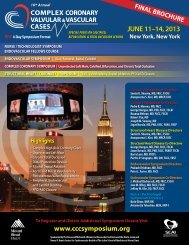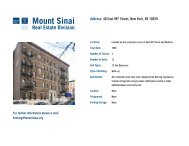CARDIAC CATH LAB - Mount Sinai Hospital
CARDIAC CATH LAB - Mount Sinai Hospital
CARDIAC CATH LAB - Mount Sinai Hospital
You also want an ePaper? Increase the reach of your titles
YUMPU automatically turns print PDFs into web optimized ePapers that Google loves.
Patient: Owen Cowitt, MD, 66-year-old<br />
male physician<br />
Diagnosis: Chronic total occlusion of left femoral,<br />
popliteal and tibial arteries with aneurysm of the<br />
iliac artery and gangrenous toes of left foot<br />
Treatment: Complex peripheral recanalization via<br />
rotational atherectomy and drug-eluting stents<br />
“I left the hospital the following<br />
day on my feet and didn’t miss<br />
a day of work.”<br />
“I was diagnosed with adult-onset diabetes in my late<br />
thirties,” Dr. Cowitt begins. “I had difficulty managing<br />
the condition, and my health continued to deteriorate. In<br />
2004 I received a transplant to replace my failing kidneys.<br />
“Though the surgery was a success, the diabetes-related<br />
problems continued, particularly circulatory issues<br />
with my left foot, which developed chronic ulcers and<br />
gangrene. A doctor myself, I recognized it as PAD, and<br />
I visited a specialist at NYU. But they recommended<br />
only amputation, which was devastating.”<br />
A colleague of Dr. Cowitt suggested Dr. Prakash Krishnan, a<br />
specialist in endovascular intervention at <strong>Mount</strong> <strong>Sinai</strong>. “Dr.<br />
Krishnan immediately made himself available,” says Cowitt.<br />
“He radiated confidence, which I found very reassuring.”<br />
Dr. Cowitt chose December 31st to have the procedure. “My own<br />
practice generally closes for the holidays, so on New Year’s Eve<br />
day I went in for the surgery. Dr. Krishnan began the procedure<br />
by opening up a portal in my right femoral artery. He carried out<br />
a complex intervention, recanalizing my left superficial femoral<br />
artery, working down to the anterior tibial artery, clearing the<br />
occluded passages with a rotablator. When he was done I had a<br />
pedal pulse again and, best of all, an intact foot.<br />
“Dr. Krishnan later told me that he had found areas in which the<br />
occlusion was 90 to 100 percent closed but that he was able to bring<br />
them down to 0 to 10 percent! I left the hospital the following day<br />
on my feet and didn’t miss a day of work. I’ve done very well since.<br />
I’ve been back for some additional treatment for my left toes, but<br />
I’m really doing well, and that to me is a miracle.”<br />
44 <strong>Mount</strong> <strong>Sinai</strong> <strong>Hospital</strong> Cardiac Cath Lab



![December 2, 2012 [PDF] - Mount Sinai Hospital](https://img.yumpu.com/51092274/1/190x245/december-2-2012-pdf-mount-sinai-hospital.jpg?quality=85)
![January 21, 2013 [PDF] - Mount Sinai Hospital](https://img.yumpu.com/50916550/1/190x245/january-21-2013-pdf-mount-sinai-hospital.jpg?quality=85)

![February 3, 2013 [PDF] - Mount Sinai Hospital](https://img.yumpu.com/50584982/1/190x245/february-3-2013-pdf-mount-sinai-hospital.jpg?quality=85)
![March 18, 2012 [PDF] - Mount Sinai Hospital](https://img.yumpu.com/50462098/1/190x245/march-18-2012-pdf-mount-sinai-hospital.jpg?quality=85)
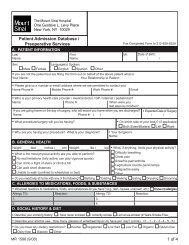
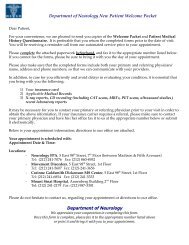
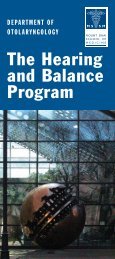
![Partners Program Guide [PDF] - Mount Sinai Hospital](https://img.yumpu.com/49411954/1/190x245/partners-program-guide-pdf-mount-sinai-hospital.jpg?quality=85)
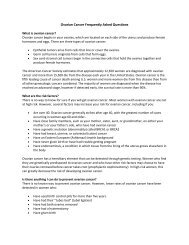
![March 19 - April 1, 2012 [PDF] - Mount Sinai Hospital](https://img.yumpu.com/48990923/1/190x245/march-19-april-1-2012-pdf-mount-sinai-hospital.jpg?quality=85)
![PGY-1 Residency Application [PDF] - Mount Sinai Hospital](https://img.yumpu.com/48577701/1/190x245/pgy-1-residency-application-pdf-mount-sinai-hospital.jpg?quality=85)
